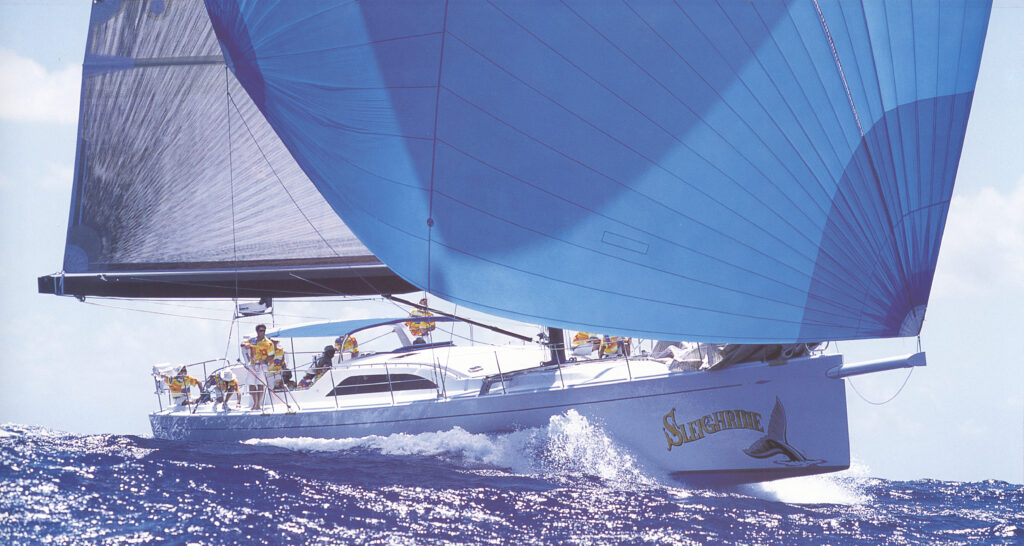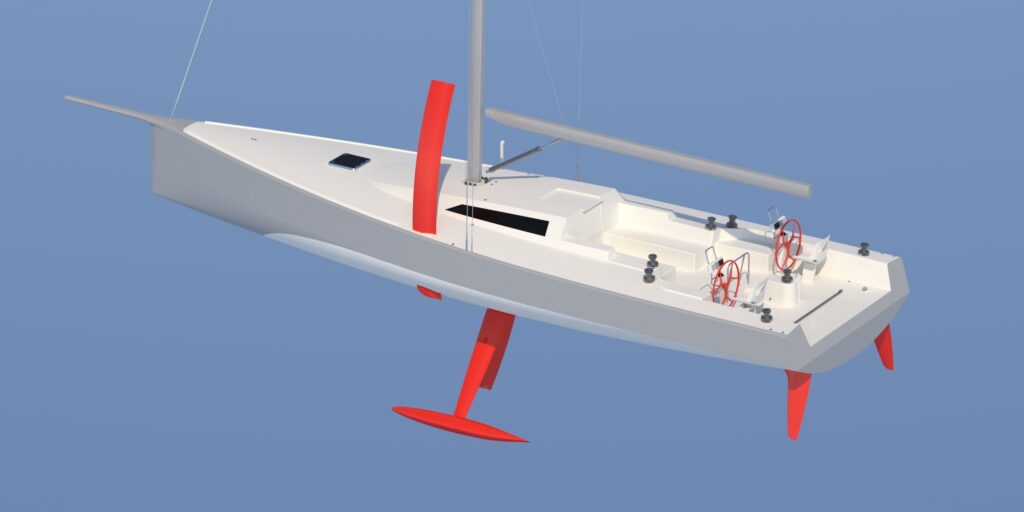Every sailor knows the thrill of reaching in a good breeze, the exhilaration of catching a rolling swell when fully powered up, and the camaraderie that forms from sharing these moments with others. Some sailors like these sensations so much that they commission boats with those experiences as the sole focus.

This article details two such sailboats designed for the pure pleasure of going fast, without consideration for rating rules and winning races.
Sleighride was designed by Sparkman & Stephens when Bill Langan was still S&S’s chief designer. The brief was clear: A relatively simple boat to sail the waters of Nantucket and Martha’s Vineyard, with no concession to rating rules. The focus was to go fast, and she was named after the “Nantucket sleighride” that described when whaling boats were being towed at high speed by a harpooned whale. As recalled by Jim Teeters, who worked with Bill on the lines, “She was designed for offwind speed.” The vessel was built in a joint venture between Eric Goetz and Derecktor Shipyard, and was launched in 1996.
The result was a thrilling sailboat whose power (and displacement) could be adjusted using water ballasts. With an LOA of 85’ 9”, a hull length of 77’ 3”, and a designed waterline (DWL) of 70’ 10”, she hit 23 knots during her sea trials and turned heads at the time. Her interior was minimal—two cabins with two single bunks each, a small galley, and a large saloon in the low-profile pilothouse. On deck, Sleighride had a large guest cockpit, sheltered under a bimini, while her twin steering stations and winches are aft, designed for the crew to sail the boat, while the guests enjoy the ride. She nailed her design brief and was a fixture of New England waters for years—well-known by many. Some 10 years ago, she underwent an extensive refit and can now be found sailing on the West Coast.

Fast forward 18 years when a long-time client of S&S approached Langan Design Partners with a very similar brief: A fast boat for sailing in the afternoon breeze in the waters of Rio, Brazil. Antonio Ferrer, our former partner at LDP, led the design of this fast, cant-keel, water-ballasted, twin-daggerboard, twin-rudder reaching machine. Zing III measured 55’ on the waterline and 62’ overall. Our experienced client enjoyed sailing with friends—some of whom were very experienced sailors— and the cockpit was designed for everyone to participate. Zing III was not a ride for the faint of heart, but the boat was easily handled thanks to the ergonomics of the cockpit and the powered winches.
Zing III was built by ML Boatworks in Indiatuba, Brazil—120 miles inland and a hub for aerospace construction due to the favorable climate—and trucked down to the coast. The builder’s website has great videos of her doing 26 knots in a 20-knot breeze.
Our client for this boat wanted to keep things simple—the interior is as basic as it gets with a single enclosed head, a minimal galley, a navigation table, and some pipe-berths. But he wanted to go fast, so we spent considerable time exploring options for the foils. The resulting configuration, with twin curved daggerboards, resulted in fantastic performance: the curved boards generate upward lift, reducing displacement, while the canting keel and water ballasts provided ample power for her generous sail plan. The carbon rig was from GMT Composites.
What drove both of these projects to fruition, a couple decades apart? The minimal interiors and carefully planned decked layouts of these two boats prioritized function over form, underpinned by the shared excitement of fast, fun sailing. Each is a reflection not only of its owner’s philosophies but also a good example of how innovative solutions in sailplans, ballasting, and foil configurations can be utilized in different ways as high-performance sailing advances.
So, what would a 2025 version of these two boats look like? Chances are recent progress in foiling technology would be part of the conversation—but so would complexity, cost, safety, and fun. As always, where we end up… is in the hands of a future client.

